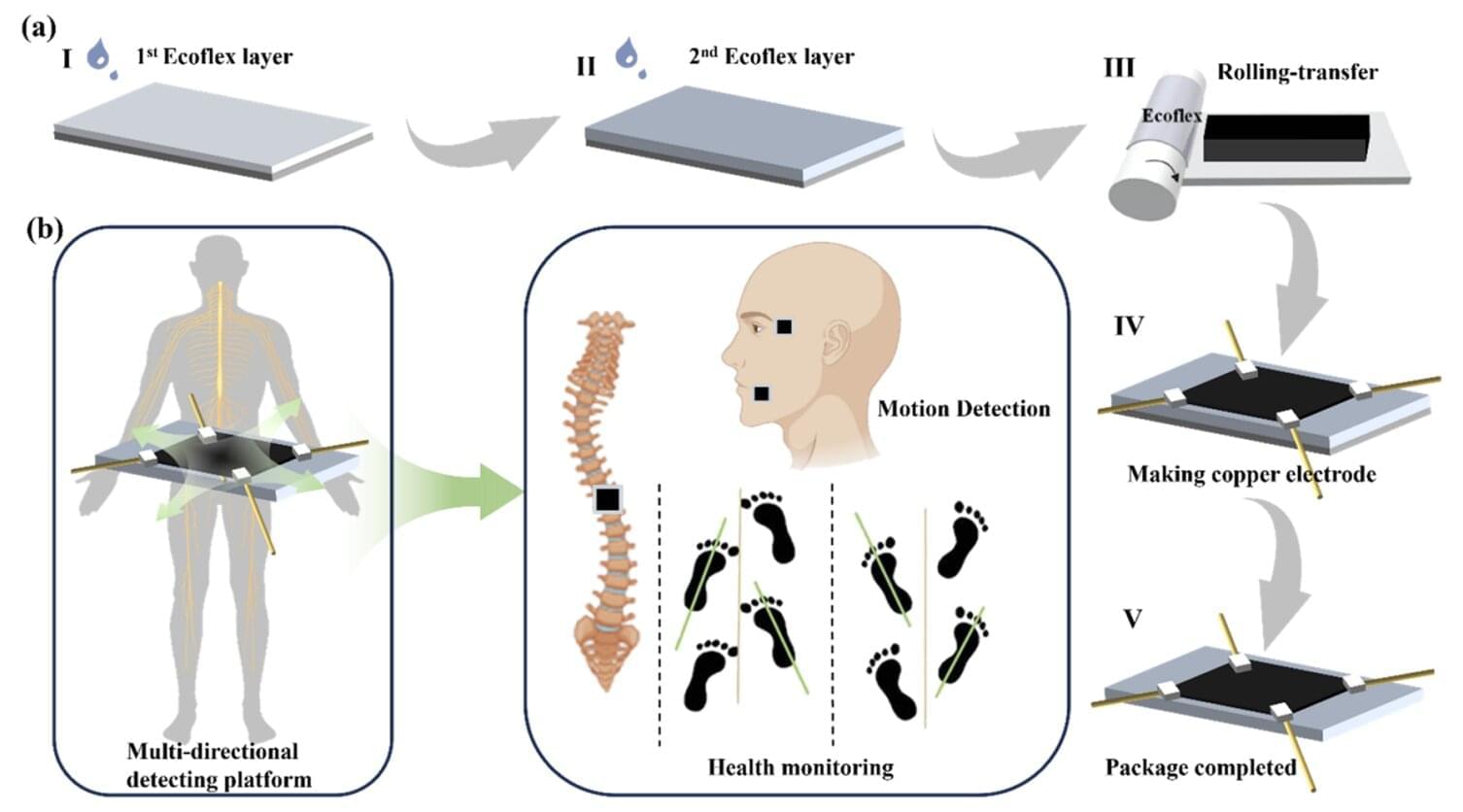Over the past decades, electronics engineers developed increasingly small, flexible and sophisticated sensors that can pick up a wide range of signals, ranging from human motions to heartrate and other biological signals. These sensors have in turn enabled the development of new electronics, including smartwatches, biomedical devices that can help monitor the health of users over time and other wearable or implantable systems.
Strain sensors, which are designed to convert mechanical force into electrical signals, are among the most widely used sensing devices within the electronics industry, as they can be valuable for tracking both human movements and health-related biological signals. While these sensors are already embedded in many electronic devices, most existing solutions are only able to track movements in one direction.
Sensors that can accurately pick up movements and forces in multiple directions could be highly advantageous, as they could be applied to a wider range of scenarios. In addition, these sensors could be embedded in existing electronic devices to broaden their functions or enhance their capabilities.
